Seal (East Asia)
A seal, in an East and Southeast Asian context, is a general name for printing stamps and impressions thereof which are used in lieu of signatures in personal documents, office paperwork, contracts, art, or any item requiring acknowledgement or authorship. In the western world they were traditionally known by traders as chop marks or simply chops. The process started in China and soon spread across East Asia. China, Japan and Korea currently use a mixture of seals and hand signatures, and, increasingly, electronic signatures.[1]
| Seal | |||||||||||||||||||||
|---|---|---|---|---|---|---|---|---|---|---|---|---|---|---|---|---|---|---|---|---|---|
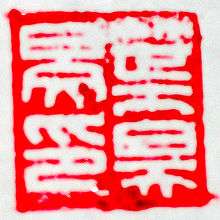 A Baiwen name seal, read up-down-right-left: 葉昊旻印 (pinyin: Ye Hao Min Yin, lit. "Seal of Ye Haomin") | |||||||||||||||||||||
| Chinese name | |||||||||||||||||||||
| Traditional Chinese | 印鑑 or 圖章 or 印章 | ||||||||||||||||||||
| Simplified Chinese | 印鉴 or 图章 or 印章 | ||||||||||||||||||||
| |||||||||||||||||||||
| Korean name | |||||||||||||||||||||
| Hangul | 인감 or 도장 or 인장 | ||||||||||||||||||||
| Hanja | 印鑑 or 圖章 or 印章 | ||||||||||||||||||||
| |||||||||||||||||||||
| Japanese name | |||||||||||||||||||||
| Kanji | 印鑑 or 印章 or 判子 | ||||||||||||||||||||
| |||||||||||||||||||||
Chinese seals are typically made of stone, sometimes of metals, wood, bamboo, plastic, or ivory, and are typically used with red ink or cinnabar paste (Chinese: 朱砂; pinyin: zhūshā). The word 印 ("yìn" in Mandarin, "in" in Japanese and Korean, pronounced the same) specifically refers to the imprint created by the seal, as well as appearing in combination with other ideographs in words related to any printing, as in the word "印刷", "printing", pronounced "yìnshuā" in Mandarin, "insatsu" in Japanese. The colloquial name chop, when referring to these kinds of seals, was adapted from the Hindi word chapa and from the Malay word cap[2], meaning stamp or rubber stamps. In Japan, seals (hanko) have historically been used to identify individuals involved in government and trading from ancient times. The Japanese emperors, shōguns, and samurai each had their own personal seal pressed onto edicts and other public documents to show authenticity and authority. Even today Japanese citizens' companies regularly use name seals for the signing of a contract and other important paperwork.[3]
Types

- Zhuwen (Chinese: 朱文; pinyin: zhūwén; Japanese pronunciation: shubun; "red characters") seals imprint the Chinese characters in red ink, sometimes referred to as yang seals.
- Baiwen (Chinese: 白文; pinyin: báiwén; Japanese pronunciation: hakubun; "white characters") seals imprint the background in red, leaving white characters, sometimes referred to as yin seals.
- Zhubaiwen Xiangjianyin (simplified Chinese: 朱白文相间印; traditional Chinese: 朱白文相間印; pinyin: zhūbáiwén xiāngjiàn yìn; lit.: 'red-white characters combined seal') seals use zhuwen and baiwen together
.png) Baiwen seal
Baiwen seal.png) Zhuwen seal
Zhuwen seal Zhubaiwen Xiangjianyin
Zhubaiwen Xiangjianyin_2.png) Zhuwen on right side, Baiwen on left side
Zhuwen on right side, Baiwen on left side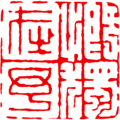 Baiwen on right side, Zhuwen on left side
Baiwen on right side, Zhuwen on left side
Government authorities
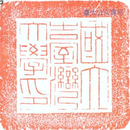

The Chinese emperors, their families and officials used large seals known as xǐ (玺; 璽), later renamed bǎo (宝; 寶; 'treasure'), which corresponds to the Great Seals of Western countries. These were usually made of jade (although hard wood or precious metal could also be used), and were originally square in shape. They were changed to a rectangular form during the Song dynasty, but reverted to square during the Qing dynasty.
The most important of these seals was the Heirloom Seal of the Realm, which was created by the First Emperor of China, Qin Shi Huang, and was seen as a legitimising device embodying or symbolising the Mandate of Heaven. The Heirloom Seal was passed down through several dynasties, but had been lost by the beginning of the Ming dynasty. This partly explains the Qing emperors' obsession with creating numerous imperial seals - for the emperors' official use alone the Forbidden City in Beijing has a collection of 25 seals - in order to reduce the significance of the Heirloom Seal.
These seals typically bore the titles of the offices, rather than the names of the owners. Different seals could be used for different purposes: for example, the Qianlong Emperor had a number of informal appreciation seals (simplified Chinese: 乾隆御览之宝; traditional Chinese: 乾隆御覽之寶; pinyin: Qiánlóng yùlǎn zhī bǎo; lit.: 'Seal(s) for [use during] the Qiánlóng emperor's inspection') used on select paintings in his collection.
The most popular style of script for government seals in the imperial eras of China (from the Song dynasty to Qing dynasty) is the Nine-fold Script (九叠文; 九疊文; jiǔdiéwén), a highly stylised script which is unreadable to the untrained.
The government of the Republic of China (Taiwan) has continued to use traditional square seals of up to about 13 centimetres each side, known by a variety of names depending on the user's hierarchy. Part of the inaugural ceremony for the President of the Republic of China includes bestowing on him the Seal of the Republic of China and the Seal of Honor. In the People's Republic of China, the seal of the Central People's Government from 1949 to 1954[4] was a square, bronze seal with side lengths of 9 centimetres. The inscription reads "Seal of the Central People's Government of the People's Republic of China". Notably, the seal uses the relatively modern Song typeface rather than the more ancient seal scripts, and the seal is called a yìn (印), not a xǐ (玺; 璽). Government seals in the People's Republic of China today are usually circular in shape, and have a five-pointed star in the centre of the circle. The name of the governmental institution is arranged around the star in a semicircle.
Personal
There are many classes of personal seals.
Name 名印
Denotes the person's name.
| Name (Chinese) | Name (Pinyin) | English name | Example | Seal Sample | Use |
|---|---|---|---|---|---|
| 姓名印 | Xingming Yin | Personal Name Seal | [李小狼印] or [李小狼] |
  |
State the personal name (family name and given name) of a person. |
| 表字印 | Biaozi Yin | Style Name Seal | [字矗昊] or [矗昊] |  |
State the style name of a person. |
| 臣妾印 | Chenqie Yin | Subject Concubine Seal | [臣小明] (male), [妾美櫻] (female) |
  |
Used in imperial times by imperial consorts or officials. |
| 書簡印 | Shujian Yin | Simplified Word Seals | [如佩信印] |  |
Used in letters, instead of writing well wishes by hand, the seal takes its place. |
| 迴文印 | Huiwen Yin | Rotating Character Seal | [李小狼印], [徐永裕印] |
  |
Same as the personal name seal, but characters are read in an anti-clockwise direction, rather than from the top-down, right-to-left. Sometimes used in writing (e.g. to sign a preface of a book). |
| 總印 | Zong Yin | General or Combined Seal | [大英伯明皇龍正之章] |  |
States the personal name and the place name where he/she is from. |
| 官印 | Guan Yin | Government Seal | [宜州管下羈縻都黎縣印] | 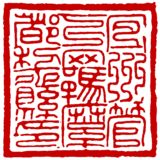 |
Seal of a department of the Government, or the leader of the department. |
| 國璽、帝璽 | Guo Xi, Di Xi | Kingdom Seal, Emperor Seal | [大清帝國之璽], [文帝行璽] |
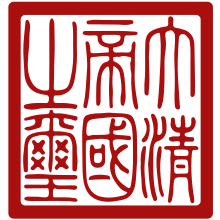 .svg.png) |
Seal of the Kingdom or the Emperor. |
Free 閑印
Are the equivalent of today's email signature, and can contain the person's personal philosophy or literary inclination. These can be any shape, ranging from ovals to dragon-shaped.
| Name (Chinese) | Name (Pinyin) | English name | Example | Seal | Use |
|---|---|---|---|---|---|
| 肖形印 | Xiaoxing Yin | Portrait Seal | (Image of deer) |  |
Has images with no words to express the user's character. |
| 吉語印 | Jiyu Yin | Lucky Sayings Seal | [日就富貴] | 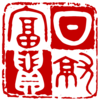 |
Has lucky sayings and proverbs. |
| 黃神越章 | Huangshen Yuezhang | Exceeding Seal of the Yellow God | [黃神越章天帝神之印] |  |
Used in ancient times on letters as a protective charm on letters to ward off wild beasts and demons of the recipient. Now used mainly as a well-wishing convention on letters to people who travel abroad as well as a protective charm for the letter to be delivered safely to the recipient. |
| 封泥 | Feng Ni | Sealing Stamp | N/A | N/A | Used to seal letters or packages, often after the sealing tag/strip has been stuck on the flap. |
Studio 齋印
Carry the name of the person's private studio 書齋, which most literati in ancient China had, although probably in lesser forms. These are more or less rectangular in shape.
| Name (Chinese) | Name (Pinyin) | English name | Example | Seal | Use |
|---|---|---|---|---|---|
| 齋館印 | Zhaiguan Yin | Studio or Study Seal | [雅目齋], [蘭雪堂] |
  |
States the name of the studio or body. This includes society and company seals. |
| 別號印 | Biehao Yin | Alias Seal | [白石道人], [白雲峰主] |
 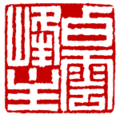 |
States aliases of the user, including artistic names, painting names and pen names. |
| 收藏印 | Shoucang Yin | Storage Seal | [松雨彗齋圖書印], [儀徵張錫組珍藏書画] |
 .png) |
Used on books or paintings that are kept by the user. This includes appreciation seals used on paintings and books that the owner admires. Serves a similar function to bookplates in the west. |
| 詞句印 | Ciju Yin | Poetry Seal | [買魚沽酒答春晴], [問梅消息] |
  |
Inscribed with a poem or proverb, used on paintings and suchlike. May be large or small, depending on length of inscription. |
| 花押印 | Huaya Yin | Signature Seal | N/A | A person's stylised signature. Often small, sometimes with images, the design can be varied in style. |
Seal paste
_with_Litchi_Stems_LACMA_M.87.205a-b_(2_of_2).jpg)
There are two types of seal paste depending on what base material they are made of. The standard colour is vermilion red (or lighter or darker shades of red) but other colours can be used such as black, navy, etc. for specific purposes.
- Silk: The red paste is made from finely pulverized cinnabar, mixed with castor oil and silk strands. The silk strands bind the mixture together to form a very thick substance. It has a very oily appearance and tends to be a bright red in colour.
- Plant: The red paste is made from finely pulverized cinnabar, mixed with castor oil and moxa punk. Because the base is a plant one that has been pulverised, the texture is very loose due to the fact that it does not bind. The appearance is sponge like and not oily.
Plant-based paste tends to dry more quickly than silk-based pastes because the plant extract does not hold onto the oil as tightly as silk. Depending on the paper used, plant pastes can dry in 10 to 15 minutes. The more absorbent the paper is, the faster it dries as the paper absorbs most of the oil. Also, plant pastes tend to smudge more easily than silk pastes due to the loose binding agent.
The paste is kept covered after it has been used, in its original container (be it plastic or ceramic). It is kept in an environment away from direct sunlight and away from intense heat to prevent it from drying out. The paste for silk based pastes need to be stirred with a spatula every month or so to avoid the oil sinking down and drying out the paste as well as to prepare it for use. A good paste would produce a clear impression in one go; if the impression is not clear requiring further impressions then it indicates that the paste is either too dry or the cinnabar has been depleted.
When the seal is pressed onto the printing surface, the procedure differs according to plant or silk based paste. For silk based paste, the user applies pressure, often with a specially made soft, flat surface beneath the paper. For plant based paste, the user simply applies light pressure. As lifting the seal vertically away from its imprint may rip or damage paper, the seal is usually lifted off one side at a time, as if bent off from the page. After this, the image may be blotted with a piece of paper to make it dry faster, although this may smudge it. Usually there needs to be a pile of soft felt or paper under the paper to be imprinted for a clear seal impression.
Usage across East Asia
Chinese usage
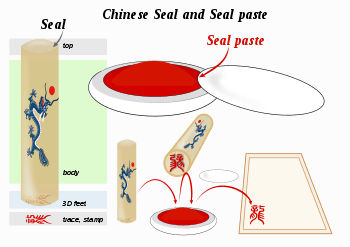


Many people in China possess a personal name seal. Artists, scholars, collectors and intellectuals may possess a full set of name seals, leisure seals, and studio seals. A well-made seal made from semi-precious stones can cost between 400 and 4000 yuan.
Seals are still used for official purposes in a number of contexts. When collecting parcels or registered post, the name seal serves as an identification, akin to a signature. In banks, traditionally the method of identification was also by a seal. Seals remain the customary form of identification on cheques in mainland China and Taiwan. Today, personal identification is often by a hand signature accompanied by a seal imprint. Seals can serve as identification with signatures because they are difficult to forge (when compared to forging a signature) and only the owner has access to his own seal.
Seals are also often used on Chinese calligraphy works and Chinese paintings, usually imprinted in such works in the order (from top to bottom) of name seal, leisure seal(s), then studio seal. Owners or collectors of paintings or books will often add their own studio seals to pieces they have collected. This practice is an act of appreciation towards the work. Some artworks have had not only seals but inscriptions of the owner on them; for example, the Qianlong Emperor had as many as 20 different seals for use with inscriptions on paintings he collected. Provided that it is tastefully done (for example, not obscuring the body of the painting, appropriate inscription, fine calligraphy, etc.), this practice does not devalue the painting but could possibly enhance it by giving it further provenance, especially if it is a seal of a famous or celebrated individual who possessed the work at some point.
Seals are usually carved by specialist seal carvers, or by the users themselves. Specialist carvers will carve the user's name into the stone in one of the standard scripts and styles described above, usually for a fee. On the other hand, some people take to carving their own seals using soapstone and fine knives, which are widely available and is cheaper than paying a professional for expertise, craft and material. Results vary, but it is possible for individuals to carve perfectly legitimate seals for themselves.
As a novelty souvenir, seal carvers also ply tourist business at Chinatowns and tourist destinations in China. They often carve on-the-spot or translations of foreign names on inexpensive soapstone, sometimes featuring Roman characters. Though such seals can be functional, they are typically nothing more than curios and may be inappropriate for serious use and could actually devalue or deface serious works of art.
Determining which side of the seal should face up may be done in a number of ways: if there is a carving on top, the front should face the user; if there is an inscription on the side, it should face to the left of the user; if there is a dot on the side, it should face away from the user.
Once seals are used, as much paste as possible is wiped from the printing surface and off the edges with a suitable material. The seals are kept in a constant environment, especially seals made of sandalwood or black ox horn. Tall thin seals are best kept on their sides, in case they should wobble and fall down. More important seals, such as authority and society seals are encased or wrapped in a golden silk cloth to add more protection.
Hong Kong
In Hong Kong, seals have fallen out of general use, as signatures are often required. In the past, seals have been used by businesses on documents related to transactions. In addition, seals have been used in lieu of a signature for the city's illiterate population.[5]
Japanese usage


In Japan, seals in general are referred to as inkan (印鑑) or hanko (判子).[6] Inkan is the most comprehensive term; hanko tends to refer to seals used in less important documents.
The first evidence of writing in Japan is a hanko dating from AD 57, made of solid gold given to the ruler of Nakoku by Emperor Guangwu of Han, called King of Na gold seal.[7] At first, only the Emperor and his most trusted vassals held hanko, as they were a symbol of the Emperor's authority. Noble people began using their own personal hanko after 750, and samurai began using them sometime during the Feudal Period. Samurai were permitted exclusive use of red ink. After modernization began in 1870, hanko came into general use throughout Japanese society.
Government offices and corporations usually have inkan specific to their bureau or company and follow the general rules outlined for jitsuin with the following exceptions. In size, they are comparatively large, measuring 2 to 4 inches (5.1 to 10.2 cm) across. Their handles are often extremely ornately carved with friezes of mythical beasts or hand-carved hakubun inscriptions that might be quotes from literature, names and dates, or original poetry. The Privy Seal of Japan is an example; weighing over 3.55 kg and measuring 9.09 cm in size, it is used for official purposes by the Emperor.
Some seals have been carved with square tunnels from handle to underside, so that a specific person can slide their own inkan into the hollow, thus signing a document with both their name and the business's (or bureau's) name. These seals are usually stored in jitsuin-style boxes under high security except at official ceremonies, at which they are displayed on extremely ornate stands or in their boxes.
For personal use, there are at least four kinds of seals. In order from most formal/official to least, they are jitsuin, ginkō-in, mitome-in, and gagō-in.[6]
A jitsuin (実印) is an officially registered seal. A registered seal is needed to conduct business and other important or legally binding events. A jitsuin is used when purchasing a vehicle, marrying, purchasing land, and so on.
The size, shape, material, decoration, and lettering style of jitsuin are closely regulated by law. For example, in Hiroshima, a jitsuin is expected to be roughly 1⁄2 to 1 inch (1.3 to 2.5 cm), usually square or (rarely) rectangular but never round, irregular, or oval. It must contain the individual's full family and given name, without abbreviation. The lettering must be red with a white background (shubun), with roughly equal width lines used throughout the name. The font must be one of several based on ancient historical lettering styles found in metal, woodcarving, and so on. Ancient forms of ideographs are commonplace. A red perimeter must entirely surround the name, and there should be no other decoration on the underside (working surface) of the seal. The top and sides (handle) of the seal may be decorated in any fashion from completely undecorated to historical animal motifs to dates, names, and inscriptions.
Throughout Japan, rules governing jitsuin design are so stringent and each design is unique so the vast majority of people entrust the creation of their jitsuin to a professional, paying upward of US$20 and more often closer to US$100, and using it for decades. People desirous of opening a new chapter in their lives—say, following a divorce, death of a spouse, a long streak of bad luck, or a change in career—will often have a new jitsuin made.
The material is usually a high quality hard stone or, far less frequently, deerhorn, soapstone, or jade. It is sometimes carved by machine. When it's carved by hand, an intō ("seal-engraving blade"), a mirror, and a small specialized wooden vice are used. An intō is a flat-bladed pencil-sized chisel, usually round or octagonal in cross-section and sometimes wrapped in string to give the handle a non-slip surface. The intō is held vertically in one hand, with the point projecting from one's fist on the side opposite one's thumb. New, modern intō range in price from less than US$1 to US$100.
The jitsuin is kept in a very secure place such as a bank vault or hidden carefully in one's home. They are usually stored in thumb-sized rectangular boxes made of cardboard covered with heavily embroidered green fabric outside and red silk or red velvet inside, held closed by a white plastic or deerhorn splinter tied to the lid and passed through a fabric loop attached to the lower half of the box. Because of the superficial resemblance to coffins, they are often called "coffins" in Japanese by enthusiasts and hanko boutiques. The paste is usually stored separately.
A ginkō-in (銀行印) is used specifically for banking; ginkō means "bank". A person's savings account passbook contains an original impression of the ginkō-in alongside a bank employee's seal. Rules for the size and design vary somewhat from bank to bank; generally, they contain a Japanese person's full name. A Westerner may be permitted to use a full family name with or without an abbreviated given name, such as "Smith", "Bill Smith", "W Smith" or "Wm Smith" in place of "William Smith". The lettering can be red or white, in any font, and with artistic decoration.

Most people have them custom-made by professionals or make their own by hand, since mass-produced ginkō-in offer no security. They are wood or stone and carried about in a variety of thumb-shape and -size cases resembling cloth purses or plastic pencil cases. They are usually hidden carefully in the owner's home.
Banks always provide stamp pads or ink paste, in addition to dry cleaning tissues. The banks also provide small plastic scrubbing surfaces similar to small patches of red artificial grass. These are attached to counters and used to scrub the accumulated ink paste from the working surface of customers' seals.
A mitome-in (認印) is a moderately formal seal typically used for signing for postal deliveries, signing utility bill payments, signing internal company memos, confirming receipt of internal company mail, and other low-security everyday functions.
Mitome-in are commonly stored in low-security, high-utility places such as office desk drawers and in the anteroom (genkan) of a residence.
A mitome-in's form is governed by far fewer customs than jitsuin and ginkō-in. However, mitome-in adhere to a handful of strongly observed customs. The size is the attribute most strongly governed by social custom. It is usually the size of an American penny or smaller. A male's is usually slightly larger than a female's, and a junior employee's is always smaller than his bosses' and his senior co-workers', in keeping with office social hierarchy. The mitome-in always has the person's family name and usually does not have the person's given name (shita no namae). They are often round or oval, but square ones are not uncommon, and rectangular ones are not unheard-of. They are always geometric figures. They can have red lettering on a blank field (shubun) or the opposite (hakubun). Borderlines around their edges are optional.
Plastic mitome-in in popular Japanese names can be obtained from stationery stores for less than US$1, though ones made from inexpensive stone are also very popular. Inexpensive prefabricated seals are called sanmonban (三文判). Prefabricated rubber stamps are unacceptable for business purposes.
Mitome-in and lesser seals are usually stored in inexpensive plastic cases, sometimes with small supplies of red paste or a stamp pad included.
Most Japanese also have a far less formal seal used to sign personal letters or initial changes in documents; this is referred to by the broadly generic term hanko. They often display only a single hiragana, kanji ideograph, or katakana character carved in it. They are as often round or oval as they are square. They vary in size from 0.5-to-1.5-centimetre wide (0.20 to 0.59 in); women's tend to be small.
Gagō-in (雅号印) are used by graphic artists to both decorate and sign their work. The practice goes back several hundred years. The signatures are frequently pen names or nicknames; the decorations are usually favorite slogans or other extremely short phrases. A gago in can be any size, design, or shape. Irregular naturally occurring outlines and handles, as though a river stone were cut in two, are commonplace. The material may be anything, though in modern times soft stone is the most common and metal is rare.
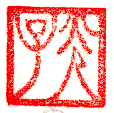
Traditionally, inkan and hanko are engraved on the end of a finger-length stick of stone, wood, bone, or ivory, with a diameter between 25 and 75 millimetres (0.98 and 2.95 in). Their carving is a form of calligraphic art. Foreign names may be carved in rōmaji, katakana, hiragana, or kanji. Inkan for standard Japanese names may be purchased prefabricated.
Almost every stationery store, discount store, large book store, and department store carries small do-it-yourself kits for making hanko. These include instructions, hiragana fonts written forward and in mirror-writing (as they'd appear on the working surface of a seal), a slim in tou chisel, two or three grades of sandpaper, slim marker pen (to draw the design on the stone), and one to three mottled, inexpensive, soft square green finger-size stones.
In modern Japan, most people have several inkan.
A certificate of authenticity is required for any hanko used in a significant business transaction. Registration and certification of an inkan may be obtained in a local municipal office (e.g., city hall). There, a person receives a "certificate of seal impression" known as inkan tōroku shōmei-sho (印鑑登録証明書).
The increasing ease with which modern technology allows hanko fraud is beginning to cause some concern that the present system will not be able to survive.
Signatures are not used for most transactions, but in some cases, such as signing a cell phone contract, they may be used, sometimes in addition to a stamp from a mitome-in. For these transactions, a jitsuin is too official, while a mitome-in alone is insufficient, and thus signatures are used.[8][9]
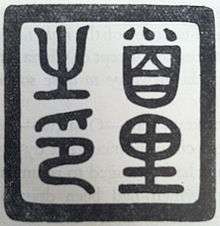
Chinese style seals were also utilized by the Ryūkyū Kingdom.[10]
Korean usage
The seal was first introduced to Korea in approximately 2nd century BC. The remaining oldest record of its usage in Korea is that kings of Buyeo used a royal seal (oksae: 옥새, 玉璽) which bore the inscription of Seal of the King of Ye (濊王之印, 예왕지인). The use of seals became popular during the Three Kingdoms of Korea period.
In the case of State Seals in monarchic Korea, there were two types in use: Gugin (국인, 國印) which was conferred by the Emperor of China to Korean kings, with the intent of keeping relations between two countries as brothers (Sadae). This was used only in communications with China and for the coronation of kings. Others, generally called eobo (어보, 御寶) or eosae (어새, 御璽), are used in foreign communications with countries other than China, and for domestic uses. With the declaration of establishment of Republic of Korea in 1948, its government created a new State Seal, guksae (국새, 國璽) and it is used in promulgation of constitution, designation of cabinet members and ambassadors, conference of national orders and important diplomatic documents.

Seals were also used by government officials in documents. These types of seals were called gwanin (관인, 官印) and it was supervised by specialist officials.
In modern Korea, the use of seals is still common. Most Koreans have personal seals, and every government agency and commercial corporation has its own seals to use in public documents. While signing is also accepted, many Koreans think it is more formal to use seals in public documents. In 2008, the Constitutional Court of South-Korea upheld a Supreme court judgement that a signed and handwritten will which lacked a registered seal was invalid.[11]
Personal seals (Korean: 도장; RR: dojang) in Korea can be classified by their legal status. Ingam (인감, 印鑑) or sirin (실인, 實印), meaning registered seal, is the seal which is registered to local office. By registering the seal, a person can issue a "certificate of seal registration" (Korean: 인감증명서; Hanja: 印鑑證明書; RR: ingam-jungmyeong-seo) which is a required document for most significant business transactions and civil services.
The legal system of registered seals was introduced by the Japanese colonial government in 1914. While it was scheduled to be completely replaced by the electronic certification system in 2013 in order to counter fraud, ingam still remains as an official means of verification for binding legal agreement and identification.[12] The government did pass the 'Act on Confirmation, etc. of Personal Signature (본인서명사실 확인 등에 관한 법률)' in 2012, which allows pre-registered handwritten signatures to have the same legal effect as ingam.[13]
While ingam is used in important business, other dojangs are used in everyday purpose such as less-significant official transactions. Thus most Koreans have more than two seals.
In traditional arts, like in China and Japan, an artist of Chinese calligraphy and paintings would use their seals (generally leisure seals and studio seals) to identify his/her work. These types of seals were called Nakkwan (낙관, 落款). As seal-carving itself was considered a form of art, many artists carved their own seals. Seals of Joseon-period calligraphist and natural historian Kim Jung-hee (aka Wandang or Chusa) are considered as antiquity.
Korean seals are made of wood, jade, or sometimes ivory for more value. State Seals were generally made of gold or high-quality jade. Rare cases of bronze or steel seals exist.
Usage in Southeast Asia
Filipino usage
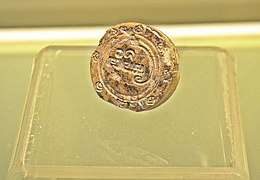
The Philippines also had a sealing culture prior to Spanish colonization. However, when the Spaniards succeeded in colonizing the islands, they abolished the practice and burned all documents they captured from the natives while forcefully establishing a Roman Catholic-based rule. Records on Philippine seals were forgotten until in the 1970s when actual ancient seals made of ivory were found in an archaeological site in Butuan. The seal, now known as the Butuan Ivory Seal, has been declared as a National Cultural Treasure. The seal is inscribed with the word "Butwan" through a native suyat script. The discovery of the seal proved the theory that pre-colonial Filipinos, or at least in coastal areas, used seals on paper. Before the discovery of the seal, it was only thought that ancient Filipinos used bamboo, metal, bark, and leaves for writing. The presence of paper documents in the classical era of the Philippines is also backed by a research of Dr. H. Otley Beyer, father of Philippine anthropology, stating that Spanish friars 'boasted' about burning ancient Philippine documents with suyat inscriptions, one of the reasons why ancient documents from the Philippines are almost non-existent in present time. The ivory seal is now housed at the National Museum of the Philippines. Nowadays, younger generations are trying to revive the usage of seals, notably in signing pieces of art such as drawings, paintings, calligraphy, and literary works.[14]
Vietnamese usage
The seal is used to a lesser extent in Vietnam by authorised organisations and businesses, and also traditional Vietnamese artists. It was more common in Vietnam prior to French rule, when thereafter the practice of signature became a commonality, although western-like signatures are usually seen as having less authority in a corporate situation.[15]
Other usage
While Chinese style seals are typically used in China, Japan, and Korea, they are occasionally used outside East Asia. For example, the rulers of the Ilkhanate, a Mongol khanate established by Hulagu Khan in Persia, used seals containing Chinese characters in each of their diplomatic letters, such as the letter from Arghun to French King Philip IV and the letter from Ghazan to Pope Boniface VIII. These seals were sent by the emperors of the Yuan dynasty, a ruling dynasty of China and Mongolia, especially by Kublai Khan and his successor Emperor Chengzong.
See also
- The Eight Masters of Xiling and Xiling Society of the Seal Art
- Cash seal
- Imperial Seal of China
- Seal carving, knob carving and side carving
- Seal (emblem)
- Seal script
- Vermilion
References
- "Archived copy". Archived from the original on 2005-04-11. Retrieved 2005-04-07.CS1 maint: archived copy as title (link)
- Hobson-Jobson (1903): A glossary of colloquial Anglo-Indian words, Article «Chop»; The dictionary of trade products (1890). Article «Chhap».
- "Name Seal(2018)". Les Ateliers de Japon.
- "图文:毛主席亲手定印文--新中国的"开国之玺"_新闻_腾讯网". qq.com.
- Cheung, Mao (26 November 2017). "追尋圖章街千古一絕" [Seeking the historic craft of Seal Street]. Ta Kung Pao (in Chinese). Retrieved 31 December 2019.
- Kenkyusha's New Japanese-English Dictionary, ISBN 4-7674-2015-6
- "Gold Seal (Kin-in)". Fukuoka City Museum. Retrieved September 1, 2014.
- Kerr, George. Okinawa: History of an Island People.
- "One's Testament Needs Seal: Court". Dong-A Ilbo. 2008-03-31. Retrieved 2009-10-06.
- Na Jeong-ju (2009-07-29). "'Ingam' to Disappear in 5 Years". Korea Times. Retrieved 2009-10-06.
- "Act on Confirmation, etc. of Personal Signature". Statutes of the Republic of Korea. Retrieved 2019-05-03.
- http://www.nationalmuseum.gov.ph/nationalmuseumbeta/Collections/Archaeo/Seal.html
- http://www.mondaq.com/x/106934/Contract+Law/Vietnams+Stamp+of+Approval
- Kong Yunbai 孔雲白, Zhuanke Rumen 篆刻入門. Shanghai Book Publishings 上海書店印行: Shanghai, 1936.
- Qu Leilei, Chinese Calligraphy. Cico Books Ltd.: London, 2002.
- Wang Jia-nan; Cai Xiaoli and Young, Dawn; The Complete Oriental Painting Course: A structured, practical guide to painting skills and techniques of China and the Far East. Quarto Publishing plc. and Aurum Press: London, 1997.
- Wren, Christopher S. Chinese Chops: A Signature in Stone. New York Times. February 10, 1985.
- Masterpieces of Japanese Prints: Ukiyo-e from the Victoria and Albert Museum by Rupert Faulkner, Basil William Robinson, Richard Lane, Victoria and Albert Museum
External links
- Chinese Seals at China Online Museum
- The Art of Chinese Chop (Seal Carving)
- History of Chinese Seal Carvings
- Art-Virtue.com History of Chinese seal making
- A chop is necessary for approving decisions relating to the operations and management of a company in China.
- Introduction to Chinese Seal Carving
- Seal Culture still remains Electronic Commerce
.svg.png)